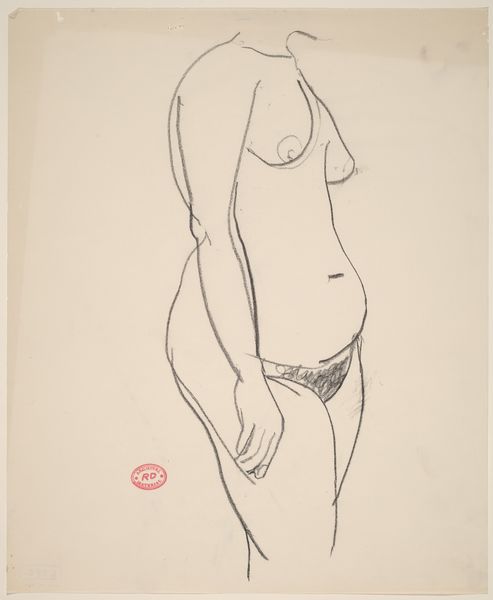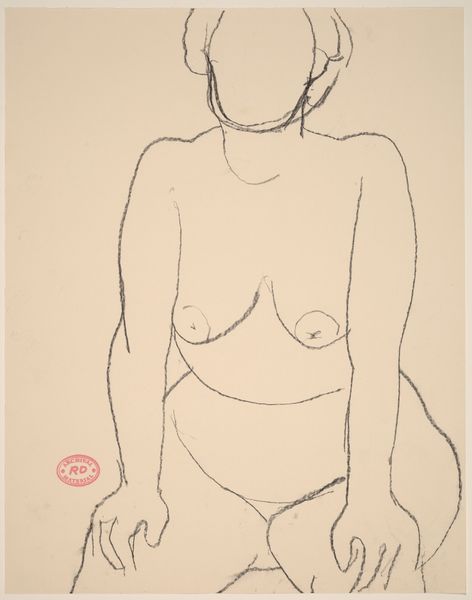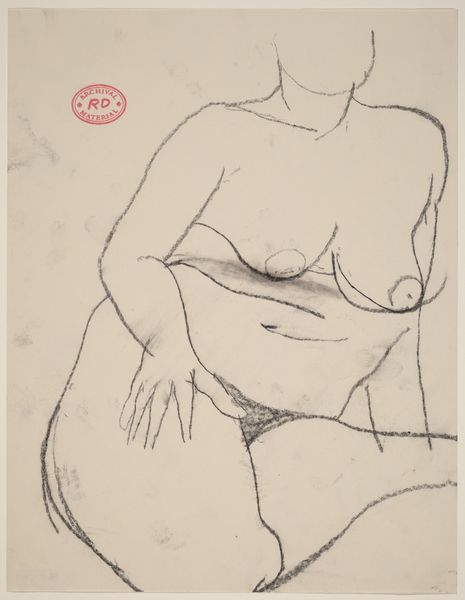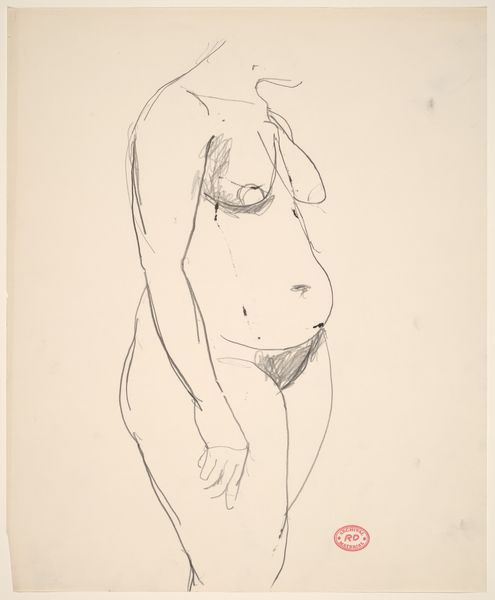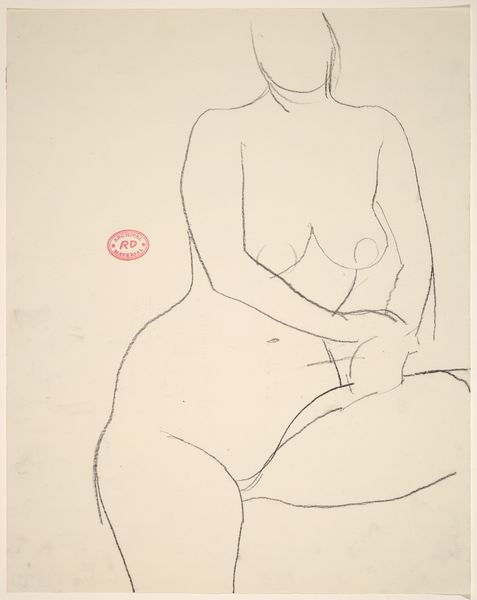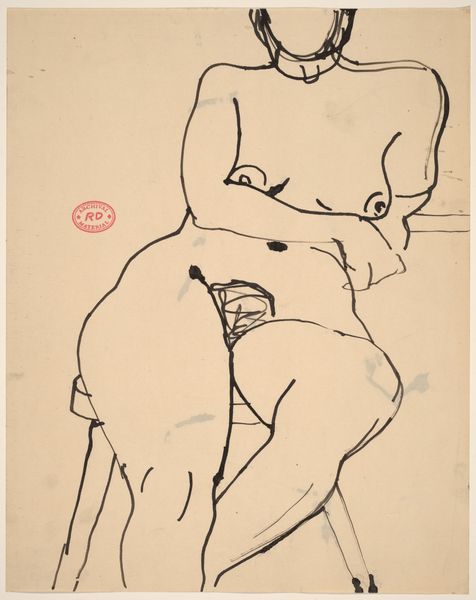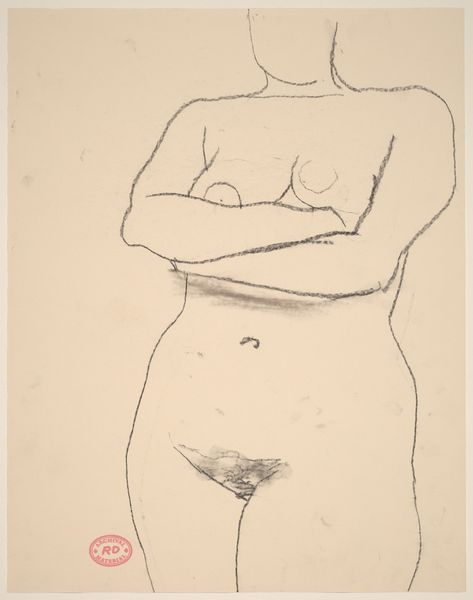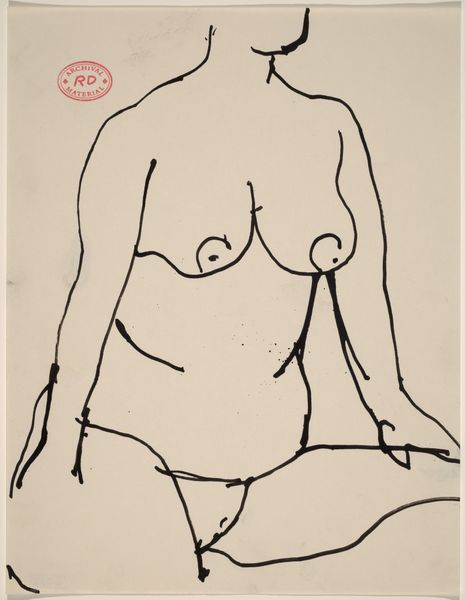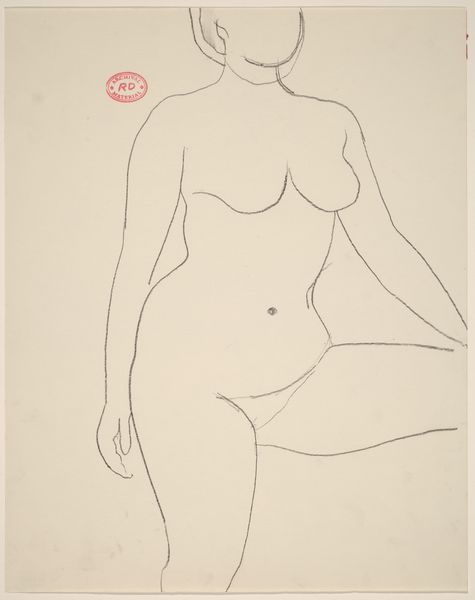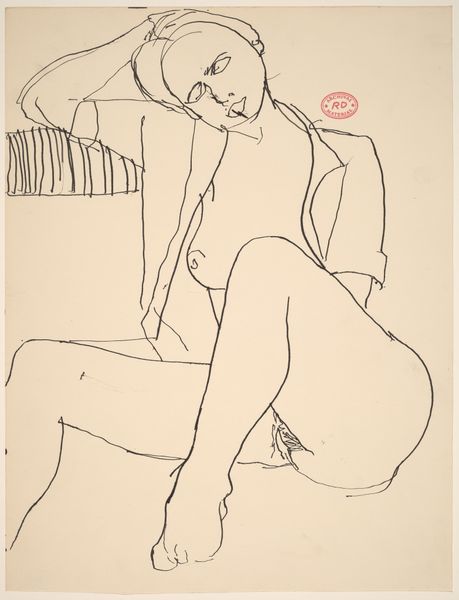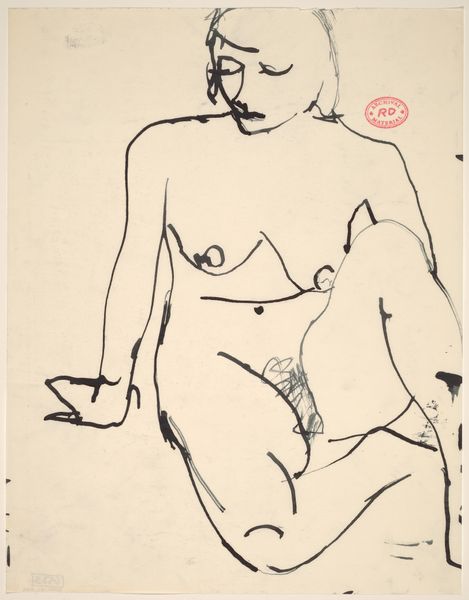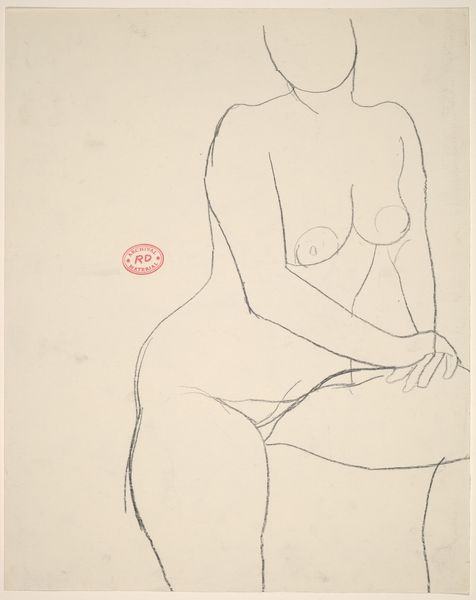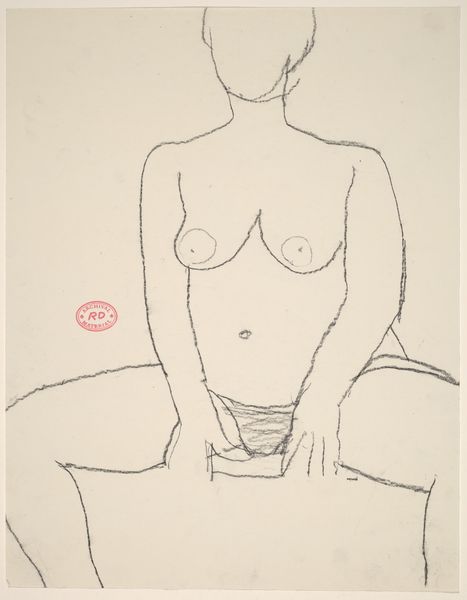![Untitled [chin to thigh view of a female nude with crossed arms] by Richard Diebenkorn](/_next/image?url=https%3A%2F%2Fd2w8kbdekdi1gv.cloudfront.net%2FeyJidWNrZXQiOiAiYXJ0ZXJhLWltYWdlcy1idWNrZXQiLCAia2V5IjogImFydHdvcmtzL2M0ZWQzY2M2LWI2MjgtNGU5MC1hMTQ4LWY0OGIzYzU3MGNjYS9jNGVkM2NjNi1iNjI4LTRlOTAtYTE0OC1mNDhiM2M1NzBjY2FfZnVsbC5qcGciLCAiZWRpdHMiOiB7InJlc2l6ZSI6IHsid2lkdGgiOiAxOTIwLCAiaGVpZ2h0IjogMTkyMCwgImZpdCI6ICJpbnNpZGUifX19&w=3840&q=75)
Untitled [chin to thigh view of a female nude with crossed arms] 1955 - 1967
0:00
0:00
drawing, pencil
#
portrait
#
drawing
#
ink drawing
#
etching
#
figuration
#
bay-area-figurative-movement
#
pencil
#
nude
Dimensions: overall: 35.2 x 27.9 cm (13 7/8 x 11 in.)
Copyright: National Gallery of Art: CC0 1.0
Curator: We're looking at Richard Diebenkorn's "Untitled [chin to thigh view of a female nude with crossed arms]". It's a pencil drawing, made sometime between 1955 and 1967. Editor: You know, right away, I get this sense of intimacy and a quiet vulnerability. The cross-armed pose—is it protective, defiant, or simply relaxed? I feel the raw quality of the pencil, the artist's hand moving, maybe a bit hesitant. Curator: That tension is key. The drawing captures the artist's process; we see the materiality, the paper, the graphite left behind. The marks themselves create the form, but it’s also about the act of looking, the studio context. What labor goes into it? What perspective is brought to bear upon the female form here, and to what purpose? Editor: Yes! And that unfinished background—those barely-there shapes! Are they props in a studio, a distorted room, or even just lingering thoughts, impressions that float around us while we are in the act of observing and trying to give it form? I think it reveals a search rather than a fixed, final idea. There's real tenderness there, too. Curator: Absolutely. Consider the historical context—mid-century modernism, where the act of creation becomes subject. There’s a dialogue here between representation and abstraction, which can reveal some difficult social history, some troubling power dynamics about how and why art is made. What choices were open to the woman? Editor: It’s not just a portrait of a woman. It's a dance between the subject, the artist, and even us, the viewers. It feels collaborative. Like a whispered conversation. Even with something as simple as line. I can appreciate both Diebenkorn's hand, his vision and that of his muse. Curator: Looking at how Diebenkorn engaged with line and form helps illuminate the ways artistic value gets assigned and transmitted. Examining the processes reveals underlying cultural and social relationships. Editor: Well, looking at this work together has really allowed me to experience its subtlety, the beauty and sensitivity within it. It invites such reflection, right? Curator: Yes. It's reminded me about the value of inquiry in appreciating the artwork as not simply an image, but as an outcome of artistic activity shaped by cultural context.
Comments
No comments
Be the first to comment and join the conversation on the ultimate creative platform.
